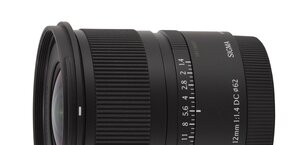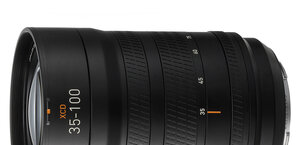Sigma A 18-35 mm f/1.8 DC HSM
5. Chromatic and spherical aberration
Chromatic aberration
The longitudinal chromatic aberration is not corrected in a perfect way – it makes itself felt at the maximum relative aperture which can be seen very well in the crops below.
 |
Please Support UsIf you enjoy our reviews and articles, and you want us to continue our work please, support our website by donating through PayPal. The funds are going to be used for paying our editorial team, renting servers, and equipping our testing studio; only that way we will be able to continue providing you interesting content for free. |
- - - - - - - - - - - - - - - - - - - - - - - - - - - - - - - - - - - - - - - - - - - - - - - -
The cast of defocused images is not very distinct, though, so it would be difficult to call this aberration a serious issue.
Similar or even better things can be said about the lateral chromatic aberration. A graph below presents the values of that aberration for particular focal lengths.

At both ends of the focal spectrum this is not a problem, remaining negligible at 35 mm, low at the widest angle, only momentarily approaching the medium level. In the middle of the range the aberration can be a bit problematic because there it firmly reaches medium levels. Still if you want to be honest you have to admit that it is closer to low than to high values.
 |
Spherical aberration
Already the first photo in this chapter shows that the spherical aberration shouldn’t be very problematic because there is no focus shift at all. Our conclusions are proven by images of defocused light points which, although showing a lot of fine, concentric rings, don’t differ from each other a lot.







